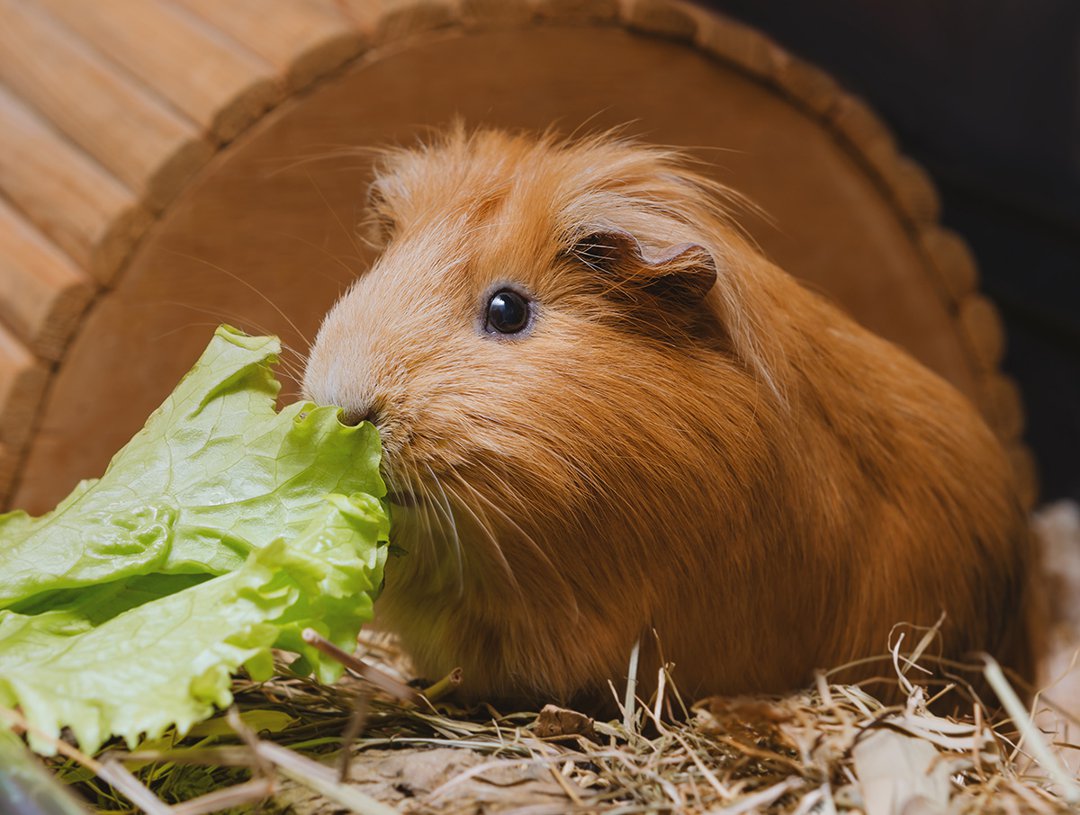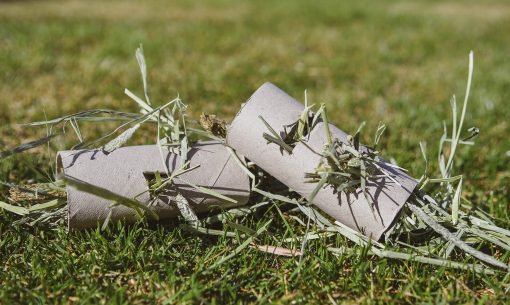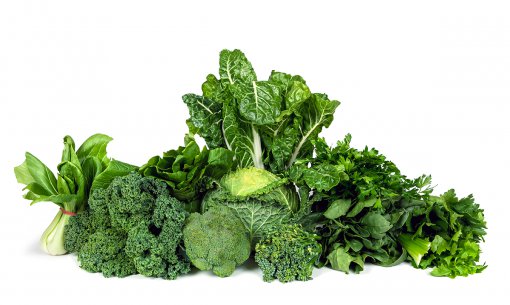The guinea pig digestive system – how does it work?
The guinea pig digestive system is pretty amazing – it’s not easy to survive on a diet of mostly grass! But this complicated system is also very delicate, and it’s important that your piggie gets the right diet in order to stay happy and well. Read on to find out more about the guinea pig digestive system and learn how to keep your pet in the best of digestive health.
What do guinea pigs eat in the wild?
In the wild, guinea pigs live in the Andes Mountains in South America. They mainly eat grass, although this will generally be tougher and dryer than the grass we’re used to seeing in our gardens! They’ll also forage other wild plants as and when they find them.
A diet based mainly on grass isn’t exactly full of energy, and it would be pretty indigestible for us humans. However, guinea pigs have developed a highly specialised digestive system so they can live on this high-fibre vegetation.
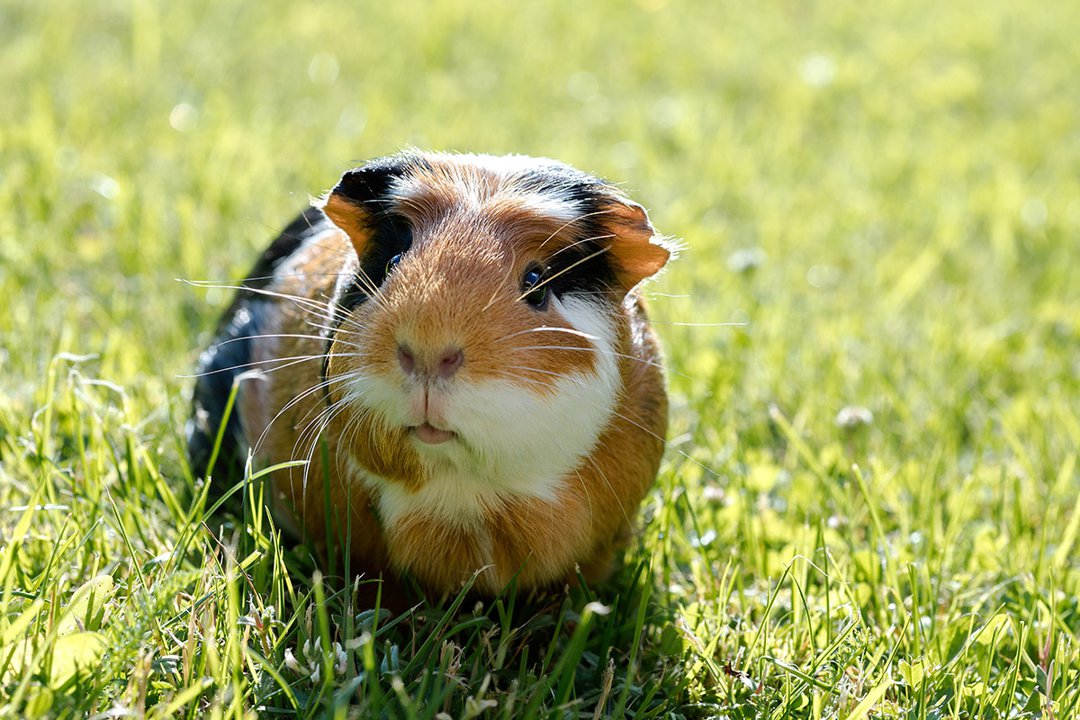
How does the guinea pig digestive system work?
The first clever thing about the guinea pig digestive system is the teeth. Since guinea pigs need to munch on tough vegetation all day, their teeth would get worn shorter and shorter if they were like ours! But instead, guinea pigs have ‘open rooted’ teeth that continually grow to compensate for all that wear.
After the teeth, the most impressive part of the guinea pig digestive system is the large intestine. This is the part that’s super specialised to extract energy and nutrients from a diet of tough vegetation.
At the start of the large intestine, guinea pigs have a huge sac called the caecum and this is full of loads and loads of microbes. These ‘friendly bacteria’ are the secret to success for our guinea pig friends, as they can break down tough fibre and release lots of nutrients for the piggie to take in!
There is a catch though: some of these nutrients can’t be absorbed in the caecum. In particular, certain vitamins and other goodies can only be absorbed earlier in the digestive tract. But guinea pigs can’t make the contents of their large intestine flow backwards towards their stomach! So they’ve developed a cunning way of dealing with this problem that seems quite disgusting to us humans.
Put simply, they eat their own poo. But not all of it – just certain special pellets that are called ‘caecotrophs’. These caecotrophs contain valuable nutrients from the caecum, such as amino acids and vitamins B and K. By eating these poop pellets, the guinea pig can absorb all the goodness they missed out on the first time round.
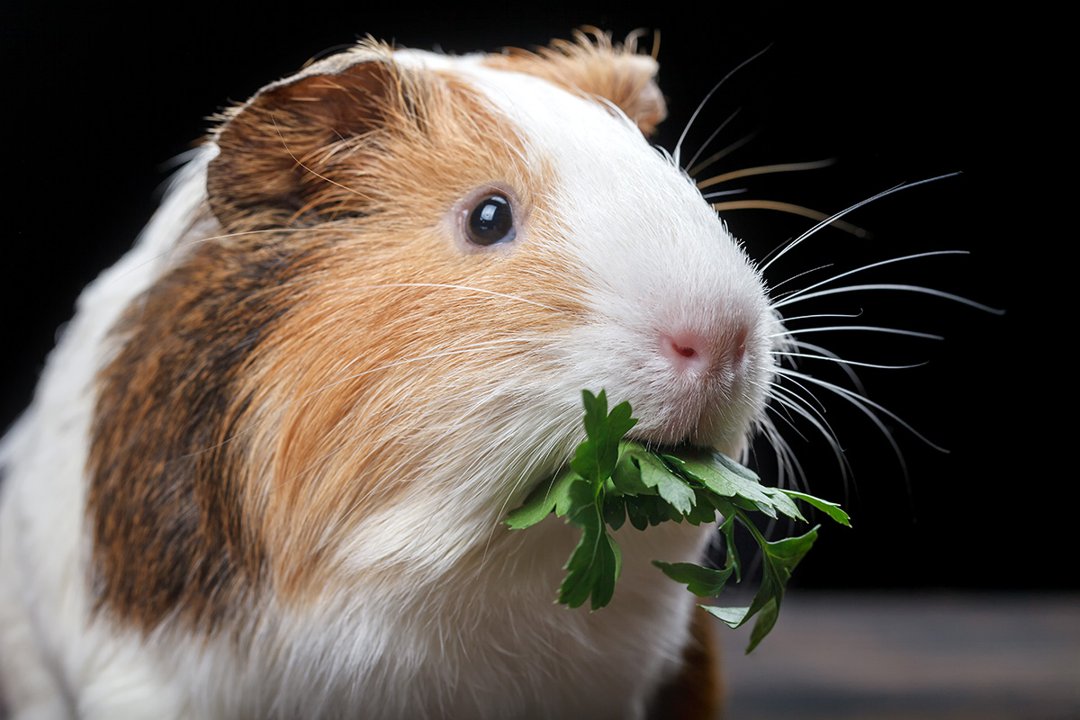
What’s really special about guinea pig dietary needs?
While everything we’ve described about the guinea pig digestive system so far is pretty impressive, guinea pigs share these traits with rabbits and other herbivores who also need a high-fibre diet. But is there anything really special about the dietary needs of our piggies? The answer’s actually yes – they do have an unusual quirk that none of our other pets share.
This quirk is that they have a special requirement for vitamin C. While other animals can make their own vitamin C in their bodies, guinea pigs aren’t able to do this. Interestingly enough, out of all the animals we commonly talk about, it’s just guinea pigs and primates like us humans that must be careful to eat enough vitamin C in our diets.
Vitamin C is really important in the body – it’s needed for healthy gums, joints and skin, and it’s also important for the immune system to work properly and for wounds to heal well. Without enough of this vitamin in their diet, guinea pigs can become very poorly with scurvy. You can learn more about guinea pigs and vitamin C in our guide.
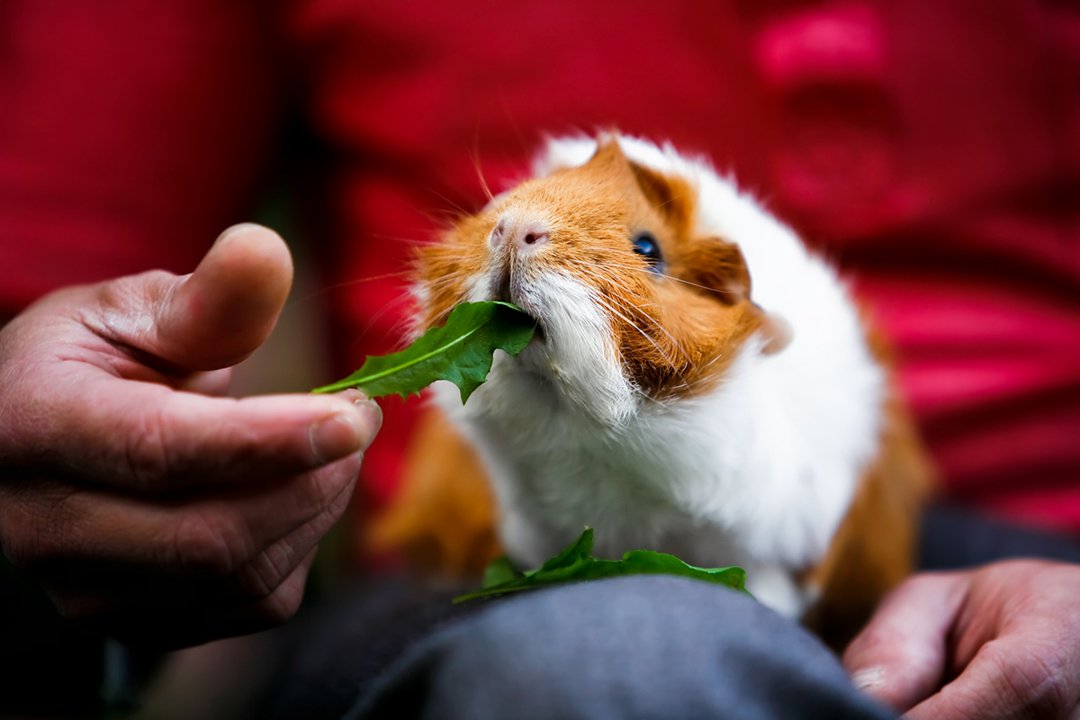
How to support a healthy guinea pig digestive system
The secret to supporting healthy guinea pig digestion is to feed a diet based on what they’d eat in the wild. Since the natural diet for guinea pigs is mostly grass, our pet piggies should have a diet that’s 80% hay or grass. All this fibre will help keep their herbivore teeth and guts nice and healthy.
When it comes to hay, there are loads of different options to choose from and the wide array of options can be bewildering! In general, the tastiest and healthiest choices for guinea pigs are Meadow hay, such as Russel Rabbit Tasty Hay, or Timothy hay, such as Science Selective Timothy Hay. To learn more about the importance of hay in a guinea pig’s diet, check out our blog.
Alongside their hay, piggies will need a portion of fresh veg and some high-quality food that’s been formulated specifically for guinea pigs. It’s important that the food contains enough vitamin C, and ideally this should be stabilised so it will remain at high levels throughout the shelf life of the product. Both our muesli-style mix Gerty Guinea Pig Tasty Mix and our single-component diets Gerty Guinea Pig Tasty Nuggets and Science Selective Guinea Pig contain stabilised vitamin C to meet your furry friend’s nutritional needs.

How to identify guinea pig digestive system problems
Choosing the right diet is a big step towards keeping your piggie’s digestive system healthy, but it’s also important to know the signs that might indicate there’s a problem that needs treating. If you see that your pet has loose poo or diarrhoea, it’s best to take them to the vet to get them checked out.
A lack of appetite is another sign that should set the alarm bells ringing. The incredibly complicated guinea pig digestive system relies on a constant input of food, and so these creatures can run into no end of problems if it grinds to a halt. It’s a big issue for our piggies to go off their food, and it’s best to get veterinary help as soon as possible to stop them getting very ill.
A third sign to look out for is if your guinea pig stops eating their caecotrophs. Obese piggies or those with arthritis may struggle to get around to reach these pellets, and this can upset their delicate digestion. It can also increase the risk of flystrike, as their back end can get quite messy. If you think that your guinea pig may not be eating their caecotrophs, take them along to your vet to find out what care they need and whether there’s an underlying cause.
We hope you’ve found this a useful guide to the guinea pig digestive system! The important thing to remember is that a good diet is the key to keeping your piggie’s digestion ticking along well. If you give your little friend lots of hay, some good quality food containing enough vitamin C and a portion of fresh veg every day, they’ll be well set up to keep happy and healthy.
